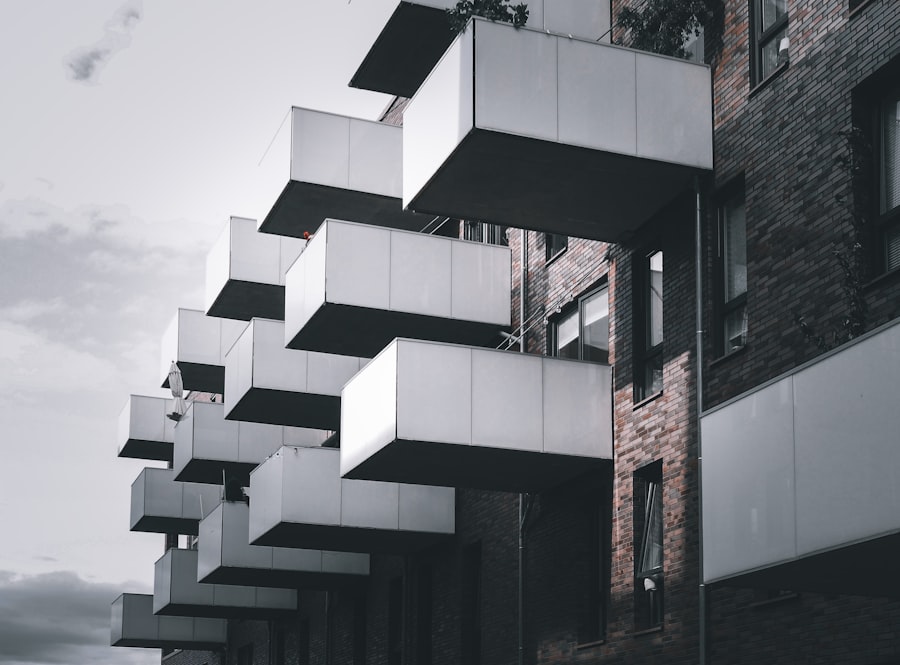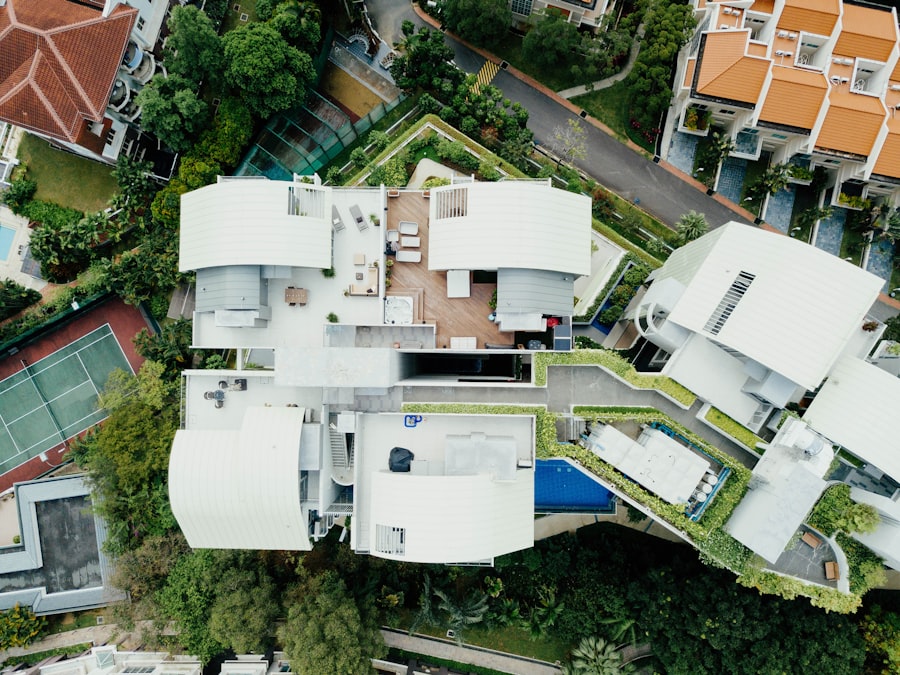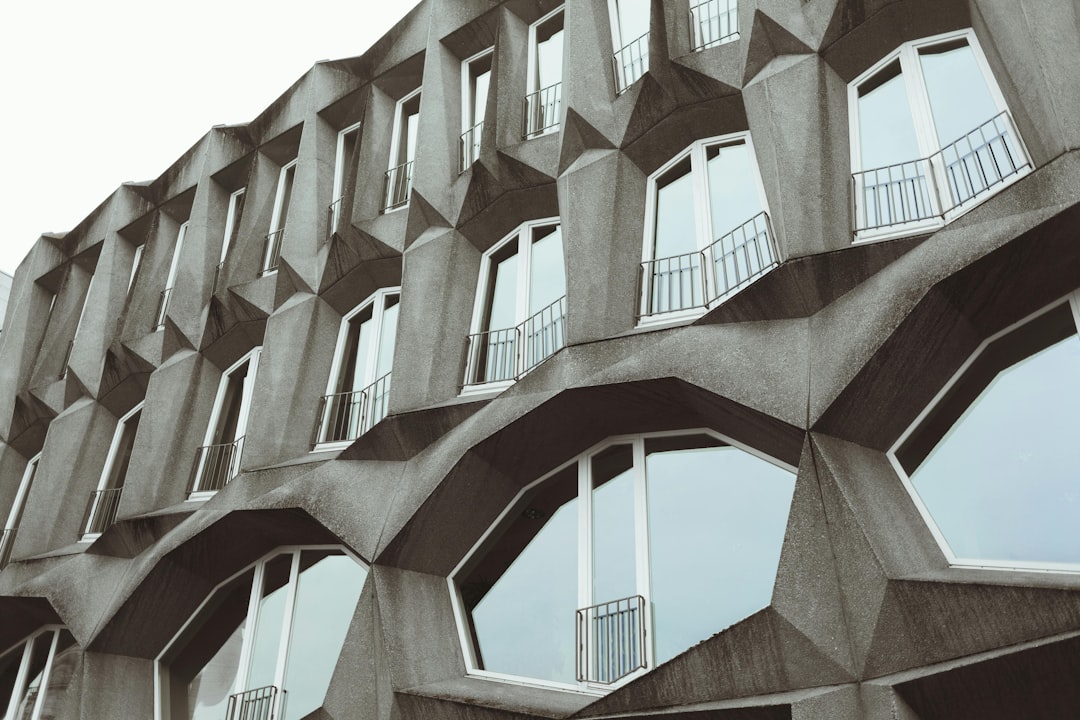Familiarity plays a crucial role in shaping your emotional responses to the spaces you inhabit.
This psychological phenomenon is rooted in the human need for predictability and stability.
You may find that familiar spaces evoke memories, feelings, and associations that can significantly influence your mood and overall well-being. The more you understand this impact, the better equipped you are to create or choose environments that foster positive experiences. Moreover, familiarity can reduce anxiety and stress levels.
When you walk into a space that feels known to you, your mind can relax, allowing you to focus on other aspects of your life. This is particularly important in public spaces, where the design can either enhance or detract from your sense of comfort. By recognizing the psychological effects of familiarity, you can appreciate how thoughtful design can create environments that resonate with you on a deeper level, ultimately enhancing your quality of life.
Key Takeaways
- Familiarity in architectural design can have a positive psychological impact on people, making them feel more comfortable and at ease in a space.
- Incorporating familiar elements in architectural design, such as cultural references, materials, and textures, can create a sense of belonging and connection for the occupants.
- Proportions and scale play a crucial role in creating comfortable spaces, as they can evoke a sense of familiarity and ease for the users.
- Natural light and ventilation are important factors in creating familiarity in architectural design, as they can enhance the overall comfort and well-being of the occupants.
- Designing spaces with familiar materials, textures, colors, and patterns can help create a sense of comfort and ease for the users, making the space more inviting and pleasant to be in.
Incorporating Familiar Elements in Architectural Design
Incorporating familiar elements into architectural design is essential for creating spaces that resonate with you and others. These elements can range from traditional architectural styles to local materials and cultural motifs. When architects draw upon familiar features, they create a sense of belonging and connection to the community.
You may notice that buildings that reflect local history or cultural identity often evoke a stronger emotional response than those that do not. Additionally, familiar elements can serve as a bridge between the past and the present. By integrating historical references or traditional designs into modern architecture, you can create a dialogue between different eras.
This not only honors the heritage of a place but also allows you to appreciate the evolution of architectural styles. As you explore various designs, consider how familiar elements can enhance your experience and foster a sense of continuity within the built environment.
Utilizing Proportions and Scale to Create Comfortable Spaces

The proportions and scale of a space significantly influence how comfortable you feel within it. When architects design spaces with human scale in mind, they create environments that are inviting and easy to navigate. You may find that rooms with high ceilings and expansive windows feel airy and open, while smaller, cozier spaces provide a sense of intimacy.
Understanding how these elements interact can help you appreciate the nuances of architectural design. Moreover, the relationship between different spaces within a building can also affect your experience. For instance, transitioning from a large foyer to a smaller living area can create a sense of progression and flow.
When spaces are thoughtfully proportioned, they guide your movement and encourage exploration. As you consider your own living or working environments, pay attention to how proportions and scale impact your comfort and overall experience within those spaces.
Importance of Natural Light and Ventilation in Creating Familiarity
| Metrics | Importance |
|---|---|
| Increased Productivity | Natural light and ventilation can improve productivity and focus in work and study environments. |
| Health Benefits | Exposure to natural light and fresh air can improve overall health and well-being. |
| Energy Efficiency | Utilizing natural light and ventilation can reduce the need for artificial lighting and air conditioning, leading to energy savings. |
| Connection to Nature | Natural light and ventilation can create a sense of connection to the outdoors, promoting a feeling of familiarity and comfort. |
Natural light and ventilation are vital components in creating familiar and comfortable spaces. You likely feel more at ease in environments that allow sunlight to filter in, illuminating the room and creating a warm atmosphere. Natural light not only enhances your mood but also helps regulate your circadian rhythms, promoting better sleep and overall well-being.
Architects who prioritize natural light in their designs often create spaces that feel more inviting and connected to the outdoors. Ventilation is equally important in fostering familiarity within a space. Fresh air circulation contributes to a healthy indoor environment, reducing feelings of stuffiness or confinement.
When you enter a well-ventilated area, you may notice an immediate sense of relief and comfort. By incorporating large windows, skylights, or open floor plans, architects can enhance both natural light and airflow, creating spaces that feel alive and welcoming. As you navigate through different environments, take note of how these elements contribute to your sense of familiarity and comfort.
Designing Spaces with Familiar Materials and Textures
The materials and textures used in architectural design play a significant role in shaping your experience within a space. Familiar materials—such as wood, stone, or brick—can evoke feelings of warmth and nostalgia. When you encounter these textures in your surroundings, they often remind you of home or cherished memories, creating an emotional connection to the environment.
Architects who thoughtfully select materials can enhance the overall atmosphere of a space, making it feel more inviting and relatable. In addition to evoking memories, familiar materials can also contribute to sustainability and environmental consciousness. By using locally sourced materials or those with low environmental impact, architects can create spaces that resonate with both you and the surrounding community.
This connection fosters a sense of pride in the built environment while promoting responsible design practices. As you explore various architectural styles, consider how materials and textures influence your perception of familiarity and comfort.
Creating Familiarity through Color and Patterns

Color and patterns are powerful tools in architectural design that can significantly impact your emotional response to a space. You may find that certain colors evoke specific feelings—warm tones like reds and oranges can create energy and excitement, while cool tones like blues and greens often promote calmness and relaxation. By understanding the psychological effects of color, architects can create environments that resonate with you on an emotional level.
Patterns also play an essential role in creating familiarity within spaces. You might notice that repeating motifs or designs can evoke cultural references or personal memories, enhancing your connection to the environment. Whether through wallpaper, textiles, or decorative elements, patterns can add depth and character to a space.
As you consider how color and patterns influence your experience, think about how they contribute to your sense of familiarity and comfort in different environments.
Incorporating Familiar Cultural References in Architectural Design
Cultural references are integral to creating familiarity in architectural design. When architects incorporate elements that reflect local traditions or historical significance, they foster a sense of identity within the community. You may find that buildings adorned with cultural symbols or motifs resonate deeply with residents, creating a shared sense of pride and belonging.
This connection to culture not only enhances the aesthetic appeal of a space but also reinforces its significance within the community. Furthermore, familiar cultural references can serve as educational tools for those who encounter them. By integrating local history or traditions into architectural design, architects can create opportunities for storytelling and cultural exchange.
As you explore different environments, consider how these references shape your understanding of the place and its people.
Using Familiarity to Enhance Wayfinding and Navigation
Familiarity is essential for effective wayfinding and navigation within architectural spaces. When you enter a new environment, clear signage and intuitive layouts help guide you through the space with ease. Architects who prioritize familiarity in their designs often incorporate recognizable landmarks or visual cues that assist in navigation.
You may notice that buildings with well-defined pathways or distinct features make it easier for you to orient yourself. Moreover, familiar elements can enhance your overall experience by reducing confusion and anxiety during navigation. When spaces are designed with clear sightlines or logical connections between areas, you are more likely to feel comfortable exploring them.
As you move through different environments, pay attention to how familiarity influences your ability to navigate effectively. Thoughtful design choices can significantly enhance your experience by making it easier for you to find your way.
Creating Comfortable Spaces for Different Generations
Designing comfortable spaces for different generations requires an understanding of their unique needs and preferences. You may find that younger generations prioritize open layouts and flexible spaces for collaboration, while older generations may seek cozy nooks for relaxation or social interaction. By considering these varying needs, architects can create environments that cater to diverse age groups while fostering intergenerational connections.
Additionally, incorporating familiar elements from different eras can enhance comfort for all generations. For instance, blending modern design with nostalgic features can create spaces that resonate with both younger individuals seeking innovation and older individuals cherishing tradition. As you explore various designs, think about how architects balance these generational preferences to create inclusive environments that promote comfort for everyone.
Designing Familiar Spaces for People with Specific Needs
When designing spaces for individuals with specific needs—such as those with disabilities or sensory sensitivities—familiarity becomes even more critical. You may find that incorporating familiar elements helps create an environment where individuals feel safe and understood. Thoughtful design choices—such as clear pathways, tactile materials, or calming colors—can significantly enhance comfort for those with unique requirements.
Moreover, involving individuals with specific needs in the design process ensures their voices are heard and their preferences are considered. By prioritizing familiarity in these designs, architects can create spaces that not only meet functional requirements but also foster emotional well-being. As you engage with different environments, consider how thoughtful design choices contribute to inclusivity and comfort for all individuals.
Case Studies: Successful Examples of Architects Designing for Familiarity
Examining successful case studies of architects who prioritize familiarity in their designs offers valuable insights into effective practices. One notable example is the work of architect Tadao Ando, whose use of natural materials and light creates serene environments that resonate deeply with visitors. His designs often incorporate familiar elements from Japanese culture while embracing modern aesthetics, resulting in spaces that evoke tranquility and reflection.
Another compelling case study is the High Line in New York City—a transformed elevated railway turned public park that incorporates familiar elements from its industrial past while providing green space for urban dwellers. The integration of native plants, seating areas reminiscent of old train platforms, and pathways that echo the original railway layout creates a sense of familiarity amidst the bustling cityscape. As you explore these case studies, consider how architects successfully weave familiarity into their designs to enhance emotional connections with their environments.
By learning from these examples, you can appreciate the profound impact that thoughtful design has on creating spaces that resonate with individuals on multiple levels. In conclusion, understanding the psychological impact of familiarity is essential for creating comfortable architectural spaces that resonate with individuals across various contexts. By incorporating familiar elements—such as materials, colors, cultural references, and thoughtful layouts—architects can foster emotional connections that enhance well-being and promote inclusivity within communities.
As you navigate through different environments, take note of how these principles manifest in design choices around you; they play a significant role in shaping your experiences within the built environment.
Architects often design for familiarity to create spaces that resonate with people’s experiences and emotions, fostering a sense of comfort and belonging. This approach is explored in greater detail in the article found at Freaky Science, which discusses how familiar architectural elements can enhance user engagement and satisfaction in built environments. By integrating recognizable features, architects can bridge the gap between the new and the known, ultimately leading to more successful and meaningful designs.
WATCH THIS! Déjà Vu Is a GLITCH in the Matrix: Your Brain’s Worst Error Explained
FAQs
What is the concept of designing for familiarity in architecture?
Designing for familiarity in architecture refers to the practice of incorporating familiar elements, patterns, and layouts into building designs to create a sense of comfort and ease for the occupants. This approach aims to make spaces more intuitive and easier to navigate, ultimately enhancing the user experience.
Why do architects design for familiarity?
Architects design for familiarity to create spaces that are more easily understood and navigated by the users. By incorporating familiar elements and patterns, architects can help people feel more comfortable and at ease in their surroundings, ultimately improving the overall user experience.
What are some examples of familiar design elements in architecture?
Some examples of familiar design elements in architecture include symmetrical layouts, natural light, familiar materials such as wood and stone, and traditional building forms such as pitched roofs and porches. These elements are often used to create a sense of comfort and familiarity for the building’s occupants.
How does designing for familiarity impact the user experience?
Designing for familiarity can have a positive impact on the user experience by making spaces more intuitive and easier to navigate. When people feel comfortable and at ease in their surroundings, they are more likely to have a positive experience and feel a sense of connection to the space. This can lead to increased satisfaction and well-being for the occupants.
